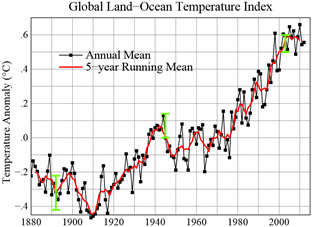
Galvanized by a disastrous oil spill in Santa Barbara, California, in 1969, Democratic Senator Gaylord Nelson and Republican Congressman Pete McCloskey enlisted Denis Hayes from Harvard, along with a staff of 85, to coordinate a day of national consciousness about the environment - Earth Day. Their hope was to channel the energy of the student anti-Vietnam-war movement to propel their cause. That was why the date April 22, 1970 was chosen: because it fell between most colleges' spring break and final exam period.
On that first Earth Day, 20 million Americans took to streets, parks and auditoriums to demonstrate for a healthy, sustainable environment. These included college students and groups that had coalesced around such issues as oil spills, polluting factories and power plants, raw sewage, toxic dumps, pesticides, the loss of wilderness, and the extinction of wildlife.
On the surface, Earth Day appeared to be a rollicking success. Within a year, overwhelming bipartisan support in Congress and the White House had led to the formation of the Environmental Protection Agency, and passage of the Clean Air, Clean Water, and the Endangered Species Act. Then, in 1990, environmental leaders recruited Denis Hayes to take his initiative to the world stage. The first global Earth Day roused 200 million people in 141 countries and paved the way for the UN Earth Summit in Rio de Janeiro in 1992.
Despite this seeming progress, the environmental situation has become far more critical:

Why did the hopes behind the original Earth Day lead to so little prolonged success? For a variety of reasons. In 1970, it was effective to mobilize the energy of the anti-war movement. But in the years that followed, that connection stigmatized environmentalism as being a fringe or counterculture issue. At the same time, the burning of fossil fuels was so integral to what was perceived as progress that environmentalism seemed to be a threat to human betterment - especially for developing nations such as China and India.
Now, however, there is increasing recognition - even in those developing countries - that saving the planet for our children and grandchildren is the great existential crisis facing us all. So, despite the formidable challenges ahead, this Earth Day brings renewed hope that those challenges can be faced and met.